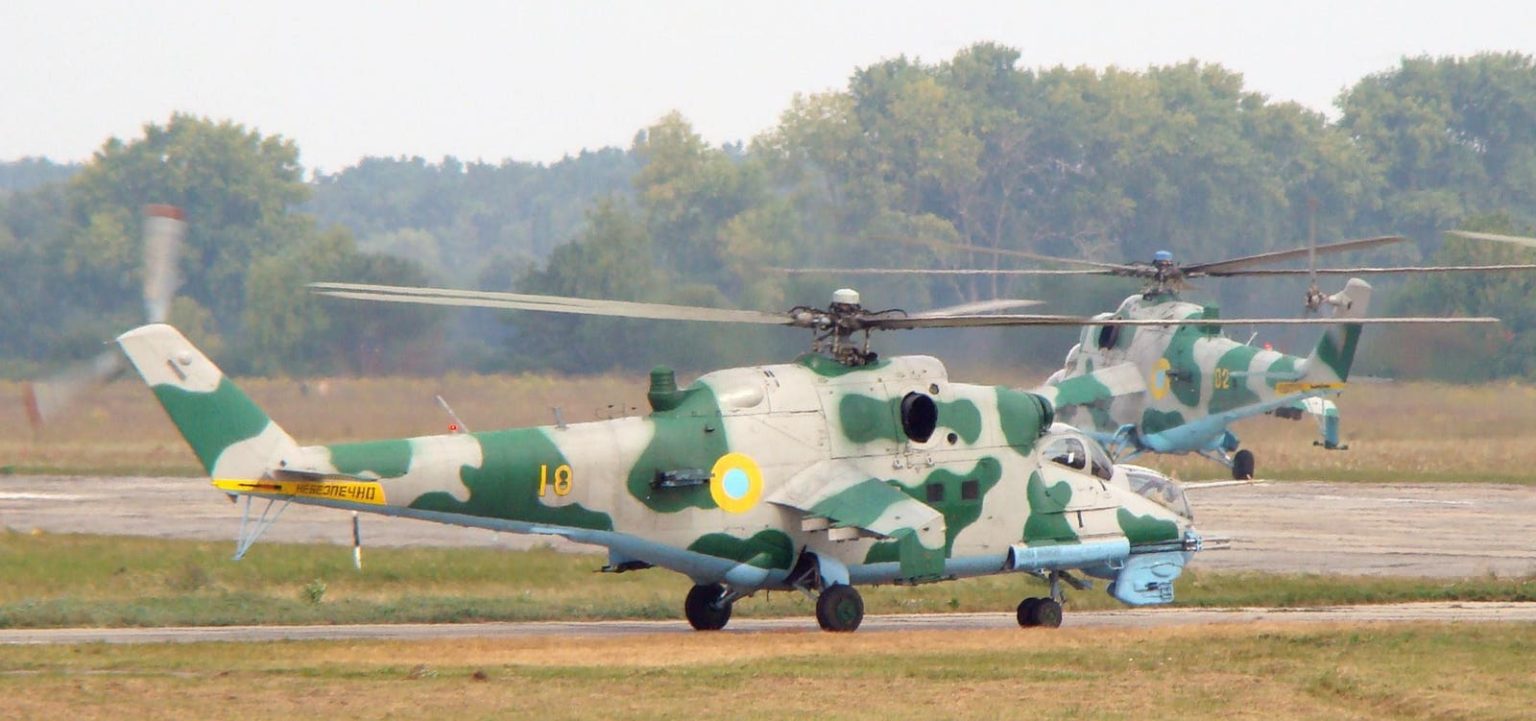Yesterday, a Russian drone spotted six Ukrainian air force Sukhoi Su-27 fighters parked in the open in broad daylight on the tarmac at Mirgorod air base, in northern Ukraine 100 miles from the border with Russia.
A Russian Iskander ballistic missile streaked in, destroying two of the precious supersonic fighters—potentially five percent of the overall Ukrainian Su-27 fleet.
Today, something similar happened. A Russian drone winged over the Ukrainian air base in Poltava, just east of Mirgorod and also 100 miles from the border. After hours of surveillance, an Iskander missile struck—damaging, if not destroying, a Ukrainian army Mil Mi-24 gunship helicopter.
It’s apparent what’s going on. A shortage of air defenses has exposed Ukrainian air bases to Russian drone and missiles attacks. Russian raids on Ukrainian bases have steadily escalated since last fall. So far, these raids have destroyed two Su-27 fighters, two Mikoyan MiG-29 fighters, a Sukhoi Su-25 attack jet and potentially the Mi-24.
The losses aren’t sustainable for the battered Ukrainian air force and army aviation brigades. The air force has just a few dozen each of the MiGs and Sukhois and no obvious source for identical replacements. The army has 50 or so Mi-24s but could also struggle to acquire more copies.
Yes, the air force is about to get 85 Lockheed Martin F-16s and a dozen or so Dassault Mirage 2000s from its European allies. But these new aircraft will be just as vulnerable on the ground as the MiGs, Sukhois and Mils are.
It’s an air defense crisis. Normally, the Ukrainians would protect their most important bases with layers of surface-to-air missiles. But the Ukrainian air force and army are struggling to simultaneously cover cities, major troop concentrations and front-line bases such as the Mirgorod and Poltava airfields.
The numbers underscore the scale of the problem. Between them, the Ukrainian army and air force began the wider war with around 400 surface-to-air missile systems. Twenty-eight months later, the Ukrainians have lost around 140 of those systems and acquired around a hundred as replacements.
In theory, the Ukrainians are down just 10 percent of their pre-war air-defense force. But that force is stretched much thinner than it was before February 2022. Russian attacks on Ukrainian cities—targeting apartment buildings, hospitals and even churches—have compelled the Ukrainian military to concentrate its best air defenses around the biggest cities.
Those systems had to come from somewhere. It’s apparent that, in prioritizing air cover for the cities, the Ukrainian armed forces have left their airfields less protected. The Russian drone that surveilled Poltava was visible to everyday Ukrainians on the ground for three hours before the Iskander missile struck. Clearly, no one had any way of shooting it down.
To be clear, the Russians have the same problem. They too struggle to protect their air bases from Ukrainian missiles and drones. The difference is that Russia has more bases and more planes—and can absorb greater losses.
Help is coming to Ukraine. The United States has previewed a $2.3-billion aid package, slated for mid-July, that will reportedly include numerous air-defense systems, including long-range Patriot missiles and medium-range NASAMS missiles.
But it’s possible these new defenses will also end up protecting cities instead of air bases. “You’ve got to make sure you have air defenses in place to try to protect the areas in which you’re making investments,” U.S. Secretary of State Antony Blinken said.
The Ukrainians have tried to fill the gap by forming short-range air defense teams equipped with gun-armed trucks. If teams were present around Mirgorod and Poltava, they either didn’t notice the Russian drones winging overhead—or couldn’t hit them.
Sources:
1. War Vehicle Tracker: https://x.com/WarVehicle/status/1808218837063721464; https://x.com/WarVehicle/status/1808171970237780212
2. Oryx: https://www.oryxspioenkop.com/2022/02/attack-on-europe-documenting-ukrainian.html; https://www.oryxspioenkop.com/2022/04/answering-call-heavy-weaponry-supplied.html
3. CBS News: https://www.cbsnews.com/news/u-s-2-3-billion-in-military-assistance-for-ukraine/
4. Antony Blinken: https://x.com/EuromaidanPress/status/1808161413342384368
Read the full article here





